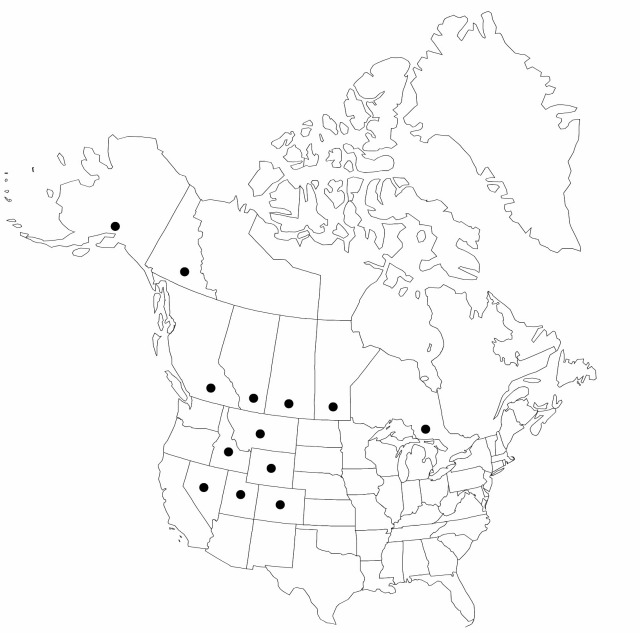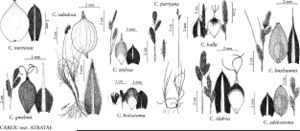Difference between revisions of "Carex parryana"
Amer. J. Sci. Arts 27: 239, fig. 65. 1835.
FNA>Volume Importer |
imported>Volume Importer |
||
| (3 intermediate revisions by 2 users not shown) | |||
| Line 6: | Line 6: | ||
|place=27: 239, fig. 65. 1835 | |place=27: 239, fig. 65. 1835 | ||
|year=1835 | |year=1835 | ||
| + | }} | ||
| + | |special_status={{Treatment/ID/Special_status | ||
| + | |code=F | ||
| + | |label=Illustrated | ||
| + | }}{{Treatment/ID/Special_status | ||
| + | |code=E | ||
| + | |label=Endemic | ||
}} | }} | ||
|basionyms= | |basionyms= | ||
| Line 11: | Line 18: | ||
|name=Carex arctica | |name=Carex arctica | ||
|authority=Dewey | |authority=Dewey | ||
| + | |rank=species | ||
}} | }} | ||
|hierarchy=Cyperaceae;Carex;Carex sect. Racemosae;Carex parryana | |hierarchy=Cyperaceae;Carex;Carex sect. Racemosae;Carex parryana | ||
| Line 34: | Line 42: | ||
-->{{#Taxon: | -->{{#Taxon: | ||
name=Carex parryana | name=Carex parryana | ||
| − | |||
|authority=Dewey | |authority=Dewey | ||
|rank=species | |rank=species | ||
| Line 48: | Line 55: | ||
|publication title=Amer. J. Sci. Arts | |publication title=Amer. J. Sci. Arts | ||
|publication year=1835 | |publication year=1835 | ||
| − | |special status= | + | |special status=Illustrated;Endemic |
| − | |source xml=https:// | + | |source xml=https://bitbucket.org/aafc-mbb/fna-data-curation/src/2e0870ddd59836b60bcf96646a41e87ea5a5943a/coarse_grained_fna_xml/V23/V23_735.xml |
|genus=Carex | |genus=Carex | ||
|section=Carex sect. Racemosae | |section=Carex sect. Racemosae | ||
Latest revision as of 20:42, 5 November 2020
Plants loosely cespitose. Culms 10–35 cm, distally scabrous. Leaves 2–4 mm wide. Inflorescences: proximal bracts shorter than or exceeding inflorescences; spikes erect, separate, proximal spikes occasionally distant, pedunculate, short-oblong or cylindric, 5–20 × 2–3 mm; lateral 2–5 spikes pistillate, distalmost often reduced to 1–3 perigynia, of varying lengths, proximal 1 or more as long as the terminal spike; terminal spike pistillate, gynecandrous (proportion of pistillate to staminate flowers variable, as few as 2 or 3 perigynia at summit), or wholly staminate. Pistillate scales light to dark brown, distal margins broadly hyaline, ovate, as long and as wide as perigynia, midvein lighter colored than body, conspicuous, often raised, prominent, distally scabrous, apex rounded, acute or mucronate. Perigynia ascending, greenish yellow or brown, veinless, elliptic, 2–2.5 × 1–1.5 mm, apex abruptly beaked, papillose; beak to 0.2 mm, truncate or obscurely bidentate, serrulate. Achenes nearly filling body of perigynia.
Phenology: Fruiting May–Aug.
Habitat: Alkaline meadows, lake margins, roadsides, ditches
Elevation: 200–2500 m
Distribution

Alta., B.C., Man., Ont., Sask., Yukon, Alaska, Colo., Idaho, Mont., Nev., Utah, Wyo.
Discussion
Selected References
None.
